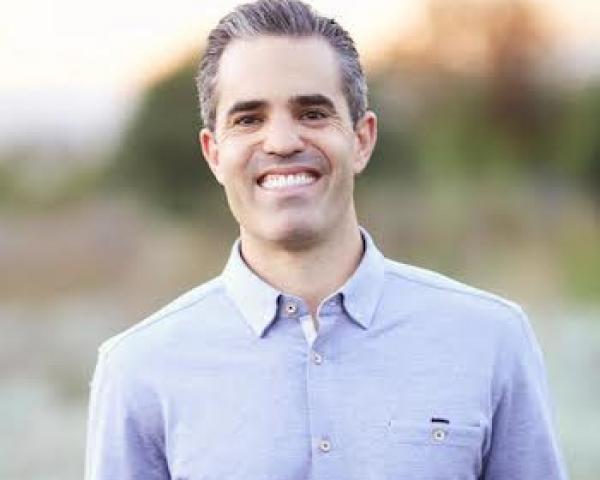How to Link Heart Health to Insurance
Life and critical illness products protect policyholders from financial loss but until now have helped little on safeguarding customers’ health.

Life and critical illness products protect policyholders from financial loss but until now have helped little on safeguarding customers’ health.

Get Involved
Our authors are what set Insurance Thought Leadership apart.
|
Partner with us
We’d love to talk to you about how we can improve your marketing ROI.
|

Ross Campbell is chief underwriter, research and development, based in Gen Re’s London office.
Typically, opening statements are so inflammatory that a meeting aimed at resolution starts with animosity. Sometimes, one side walks out.

Get Involved
Our authors are what set Insurance Thought Leadership apart.
|
Partner with us
We’d love to talk to you about how we can improve your marketing ROI.
|

Teddy Snyder mediates workers' compensation cases throughout California through WCMediator.com. An attorney since 1977, she has concentrated on claim settlement for more than 19 years. Her motto is, "Stop fooling around and just settle the case."
The right approach to collecting and analyzing market data will help avoid the potential pitfalls in launching an insurance program.

Editor’s Note: This is the third in a series of posts in which CJ Lotter, a 15-year industry veteran, shares lessons learned in the form of guidance to MGAs on the steps required to build a successful program. The first two articles are here and here.
In our last post, we tackled the first key ingredient required for program creation: distress. In a perfect world, insurers would spot distress, respond with a product and sell it to huge success. This is not a perfect world. It takes time and diligence to carve out a new program. In this post, the third of our series, we’ll explain how to collect and analyze the data that will help you avoid the typical pitfalls and create a successful and profitable program.
Carving Out a Profitable Program
If a program should target a distressed or underserved class, how do you find one? You could conduct market research to identify an underserved industry and hire the underwriting expertise to go after it. But a better approach would be to start with the expertise you already have in-house.
Underwriters with experience in a specific risk class are your best source of new program ideas. For example, let’s say you have been writing general commercial auto and transportation business for a long time. Your underwriters have gained experience over the years on the nuances of this market. Your book analysis shows that you write a high number of tow truck operators quite successfully. Additionally, one of your underwriters is intimately familiar with tow truck businesses and can tell a good risk from a bad one. With some quick research, you find there are a limited number of carriers in this market, with limited coverages. You also know, from our last post, that tow truck operations check the box for a distressed class.
You now believe you have enough of an underwriting advantage to offer a specialized program for this market, but you need to validate the opportunity with good research.
See also: The Evil Genius of a Wellness Program
Gathering Data
Good data is the backbone of a good program, and no expense should be spared to find the most accurate version of the truth. The more data collected in the early stages, the more likely you are to have a successful program or avoid a bad one. In our example, you want as much data on tow truck operators as possible. That means raw numbers and reports on the industry.
Work with companies like Dun & Bradstreet to source the market data you need. Drill down at least four digits on SIC codes to find a target class as specific as possible. Filter and sort your findings by the attributes that matter most to your company. For example, if you are targeting large tow truck companies in New York, sort by number of employees, revenue and location.
Preparing the Data
Your initial data should provide an accurate sizing of the market for your potential program. Now you can pursue some qualitative and quantitative research to further evaluate the opportunity. Here are three to consider:
Long-Term Planning
Once you determine your initial opportunity, forecast the first three to five years. Make sure your chosen market is large enough to sustain rapid growth in the early years. The rule of thumb is to double your premiums in the first three years and drive to $10 million in premium as soon as possible. Just one limits loss can sink your program if you don’t have enough critical mass.
See also: Innovation: ‘Where Do We Start?’
Tying It All Together
Thorough market research on the minute details is critical to evaluating a new program’s viability. Gut feelings are nice, but numbers give you real proof. Invest in research and analysis, and you will greatly improve your chances of a successful program.
Excerpted with permission from Instec. A complete collection of Instec’s insurance industry insights can be found here.
Get Involved
Our authors are what set Insurance Thought Leadership apart.
|
Partner with us
We’d love to talk to you about how we can improve your marketing ROI.
|
Trends over the past few years have been pointing to declining rates in most states, but the retention market is a completely different animal.

Get Involved
Our authors are what set Insurance Thought Leadership apart.
|
Partner with us
We’d love to talk to you about how we can improve your marketing ROI.
|

Mark Walls is the vice president, client engagement, at Safety National.
He is also the founder of the Work Comp Analysis Group on LinkedIn, which is the largest discussion community dedicated to workers' compensation issues.

Our chief innovation officer, Guy Fraker, told me the other day of being in an innovation strategy meeting where the CFO of a workers comp carrier talked of needing to "protect our losses."
The pushback was fast and strong: Insurers increasingly can help clients predict and prevent losses and must do so, even though lower premiums will eventually result. But we can empathize with the CFO, right? His job is to squeeze the last drop of profit out of the business, and that gets harder if premiums shrink because clients' losses are declining.
His comment points to a false dichotomy that is accepted throughout the insurance industry even in these modernizing times and that we need to move past. Left unaddressed, a belief in the dichotomy could both lead us away from our mission of protecting clients and cause strategic blindness that could endanger our businesses in the long term.
The issue is that we want to help clients, including by preventing losses, but we also need to generate as much profit as possible. Trying to maximize both goals simultaneously can seem to be somewhere between hard and impossible, depending on your role in the industry.
If we just bounce between the two goals (what might be called a thesis and an antithesis, if you’ll allow me to dip back into my vague memories from college of the Hegelian dialectic), you miss the chance for a novel solution (what Hegel called synthesis). And one is available—but only if we take a new view of what clients want and of what our sources of profits should be.
New ways of thinking have always been hard, no matter the industry. Businesses begin with some sort of novel approach, but, as they grow, become much more about developing that approach to the fullest and optimizing the business built around it rather than about developing new insights. Even worse, over time, executives often come to think that customers are as wedded to the industry structure as the executives are.
Kodak's fundamental failure was that it thought customers loved physical prints as much as Kodak loved selling the film, paper and chemicals used to produce prints. Executives, since about 1980, saw clearly how digital technology would develop but simply couldn't imagine a world where images were shared solely digitally and was slow to react to that new world.
In insurance, we have the inertia problem in spades. We think of ourselves as selling policies. Even our language locks us into thinking of ourselves as being in the product business—I've heard some talk of setting up "factories" and "manufacturing" policies. But customers don't long for policies, and they are becoming increasingly stern about letting us know their preferences.
Customers want peace of mind, and they want help managing and reducing their losses. They’ll tolerate insurance policies if that's the only way to achieve their goals—and detailed legal contracts are certainly required in many, even most, instances—but customers aren't wedded to traditional policies like we are.
We fit the description of the classic Harvard Business School article that said companies often think they're in the business of selling quarter-inch drills, when what customers want are quarter-inch holes.
If we can free ourselves from the historic emphasis on pushing product, we can see our way to providing an array of services that provide customers with the insurance equivalent of quarter-inch holes. That workers comp CFO, for instance, could sell services that would help clients identify potential problems and head off workplace injuries, based on the growing capabilities of sensors, better data analytics and other developments that the insurtech movement is providing.
The shift to services does require, of course, a willingness to look beyond today's profit streams and will require creativity. Even Kodak, belatedly, looked to digital cameras and printers (remember executives' belief about the absolute need for prints) as new revenue streams, but there just wasn't enough there to replace the billions of dollars of revenue that film, paper and chemicals had generated. The new revenue streams turned out to be rather far afield, in facilitating digital sharing of images and helping customers build stories around images, so all the value from digital photography went to Facebook, Instagram and other such platforms.
It's always tempting to think that customers don't have a choice, and inertia certainly provides some protection here for insurers. But commercial buyers' willingness to self-insure and broker dominance in captive management services sends a strong message that clients are going to get what they want, with or without insurers. And just because an insurer doesn't want to switch from a product to a service focus, lest profits be endangered, doesn't mean someone won't offer that quarter-inch-hole service. (We know a thing or two about this approach because our IE Advisory team has helped companies innovate into services.)
So, let's get beyond the false dichotomy of either helping clients OR maximizing products. Let’s turn thesis-antithesis into synthesis. Let's get beyond policies and premium, addressing customers' actual needs and finding ways to make them happy about paying us for our assistance. Hegel would be proud, and the industry will thrive.
Cheers,
Paul Carroll
Editor-in-Chief
Get Involved
Our authors are what set Insurance Thought Leadership apart.
|
Partner with us
We’d love to talk to you about how we can improve your marketing ROI.
|

Paul Carroll is the editor-in-chief of Insurance Thought Leadership.
He is also co-author of A Brief History of a Perfect Future: Inventing the Future We Can Proudly Leave Our Kids by 2050 and Billion Dollar Lessons: What You Can Learn From the Most Inexcusable Business Failures of the Last 25 Years and the author of a best-seller on IBM, published in 1993.
Carroll spent 17 years at the Wall Street Journal as an editor and reporter; he was nominated twice for the Pulitzer Prize. He later was a finalist for a National Magazine Award.
The days of hackers focusing on major businesses have given way to a new era for cybersecurity. Small businesses are the new target.

Get Involved
Our authors are what set Insurance Thought Leadership apart.
|
Partner with us
We’d love to talk to you about how we can improve your marketing ROI.
|

Ben Gold is president of QuickBridge, a privately held financial services firm providing “small business loans” and short-term working capital funding solutions for small to medium-sized businesses nationwide.
Managing catastrophe reinsurance claims is a big challenge for carriers. In particular, dealing with the “hours clause” can be baffling.

Get Involved
Our authors are what set Insurance Thought Leadership apart.
|
Partner with us
We’d love to talk to you about how we can improve your marketing ROI.
|

Grégory Moliner is CEO of Effisoft USA, an international reinsurance software vendor.
In five years, the premier insurance technology providers will be Aon, Marsh, Munich Re, Swiss Re and Allianz.

Get Involved
Our authors are what set Insurance Thought Leadership apart.
|
Partner with us
We’d love to talk to you about how we can improve your marketing ROI.
|

Karen Pauli is a former principal at SMA. She has comprehensive knowledge about how technology can drive improved results, innovation and transformation. She has worked with insurers and technology providers to reimagine processes and procedures to change business outcomes and support evolving business models.
Leaders must fearlessly create and live by tenable, actionable values--then talk about them to recruits, in interviews and in All Hands meetings.

Get Involved
Our authors are what set Insurance Thought Leadership apart.
|
Partner with us
We’d love to talk to you about how we can improve your marketing ROI.
|

Jason Andrew co-founded Limelight Health in 2013 to deliver better data integration and sales efficiency for insurance carriers, PEOs, brokers and others in the employee benefits sales ecosystem.
Many claims folks have been stuck because of regulatory constraints, inflexible legacy systems and a perpetual cycle of reduced budgets. Until now.

Get Involved
Our authors are what set Insurance Thought Leadership apart.
|
Partner with us
We’d love to talk to you about how we can improve your marketing ROI.
|

Karen Pauli is a former principal at SMA. She has comprehensive knowledge about how technology can drive improved results, innovation and transformation. She has worked with insurers and technology providers to reimagine processes and procedures to change business outcomes and support evolving business models.